Puerto Misahuallí (pronounced Pwer-toe Mis-ah-why-ee) is an Amazon town that you may not have heard of. It sits in the Oriente region of Ecuador and is seldom visited by international tourists. The reason for this tourism gap isn’t that Misahuallí is lacking in attractions, rather that the whispers haven’t yet made it onto the Gringo Trail.
I spent three weeks helping to build an eco-lodge just outside of town and got to know the locals that live there pretty well… Monkeys included! If you’re looking to escape the hubbub of the city for a few days and get back to nature, Misahuallí is the perfect destination.
Read on for the top things to do in town, an introduction to the cheekiest residents and where to find budget-friendly digs.
This post contains affiliate links. If you use them, I will receive a small commission at no extra cost to you.
Read more: (opens in new tab)
Puerto Misahuallí: A Gateway to the Ecuadorian Amazon
Climate and Weather
Puerto Misahuallí is an Amazon town. This means that it benefits from a hot and humid climate year-round. Temperatures rarely dip below 25°C during the day and 16°C at night. It is easy to get sunburnt in these kinds of conditions so make sure you pack protection to avoid turning into a tomato.
Read more about packing clothes for the jungle here.
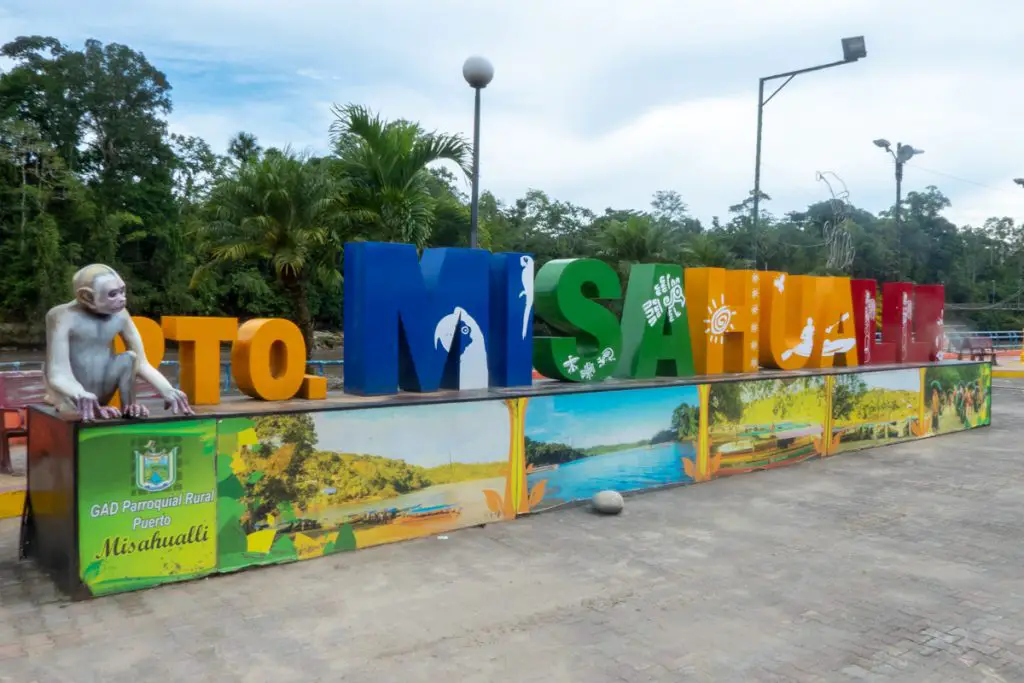
As you would expect from this type of climate, mosquitos are a real issue. Although repellent can be brought in town, it is very expensive and often only citronella is available. To ensure that you are protected, bring your own mosquito repellent with a high DEET content with you.
Stormy weather is a regular occurrence in the Oriente region and can disrupt the electricity supply. If you are heading to Misahuallí, always make sure you pack for rainy weather and bring a head torch.
Things to do in Misahuallí
1. Meet the Misahuallí monkeys
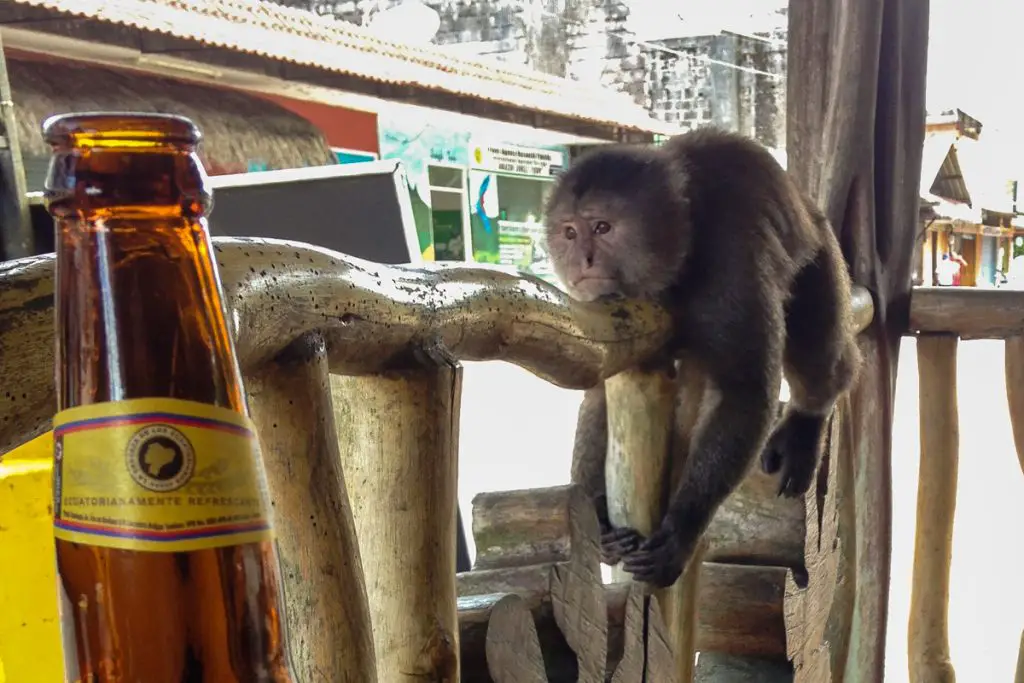
This sleepy jungle town is most famous for its iconic inhabitants. The main plaza and surrounding beaches are home to a troop of pesky Capuchin monkeys who wreak havoc around the town.
While travellers get very excited about seeing wild monkeys up close, the locals know better. The monkeys cause near-constant disruption in town, clambering on cars, hanging from electrical wires and thieving anything that they can get their tiny hands on.
My favourite thing to do as dusk is drawing in is to pull up a chair in one of the local watering holes and watch the monkeys as they scam their way around town. Be warned, they are incredible stealthy so make sure you keep your drink close and your belongings off the table!
As tempting as it might be to feed them – this is really just asking for trouble. Feed one monkey and it won’t be long before the others descend. These animals can also become vicious when there is food involved.
2. Hike around the Thousand-Year-Old Tree
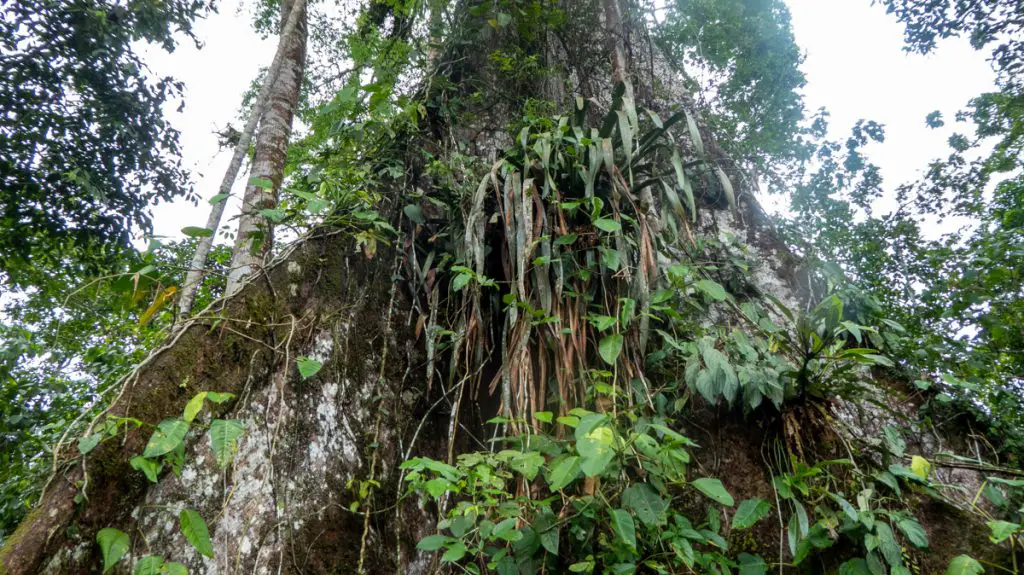
When I heard there is a ridiculously old tree just outside of Misahuallí centre, I was dying to go and see it. The locals call it árbol milenario, meaning thousand-year-old tree. And, it is difficult to put into words just how massive this ancient tree is.
When you visit, make sure that you take the time to walk all the way around it. This will take a lot longer than you think! Also, keep your eyes peeled for exotic wildlife in this area. The ants are absolutely huge and you’re likely to spot a range of colourful birds and butterflies in the forest.
This ancient tree has long been an important addition to the forest and has been dubbed the protector of the jungle. Indigenous communities claim that jaguars take refuge amongst the roots during the birthing season as it provides shelter from the elements.
This breathtaking tree is a popular stop on many jungle tours but is actually very easy to visit independently. Head out of town in the opposite direction to the big bridge in the centre. You should be going towards Pununo.
Stay on this road until you come to the Pununo crossing which is marked by a big suspension bridge. Continue over this bridge for a few minutes and look out for a trail on the right, directly opposite a gravel path on the left. Follow it round to take in the sights of one of nature’s most impressive marvels.
The walk from the middle of town should take around half an hour, if you are lost, you can find the tree marked on Google Maps. Simply look for Ceibo gigante.
3. Visit the Butterfly Farm
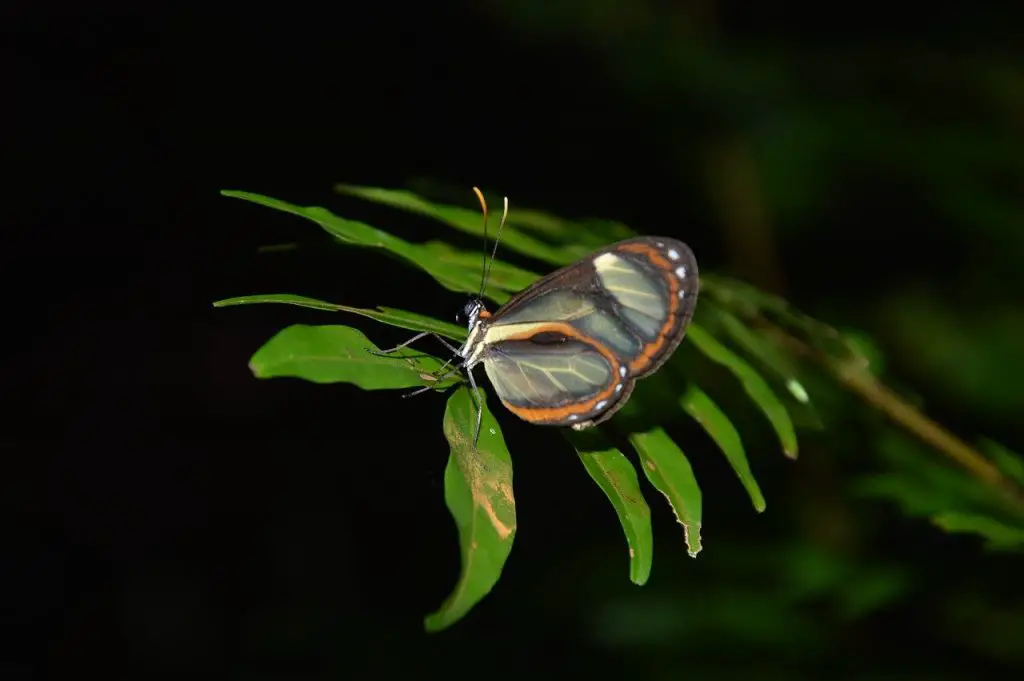
If you’re a nature lover, don’t miss the opportunity to head to the Butterfly House located on the edge of town. Run by passionate and knowledgeable local Pepe, he is intent on helping Ecuador’s butterfly population survive and thrive.
This budget-friendly attraction costs just $2USD to enter, making it ideal for shoestring backpackers. For this small fee, you’ll get to take in the sights of the butterflies and also learn all about the lifecycle of these beautiful insects.
4. Explore the jungle by day
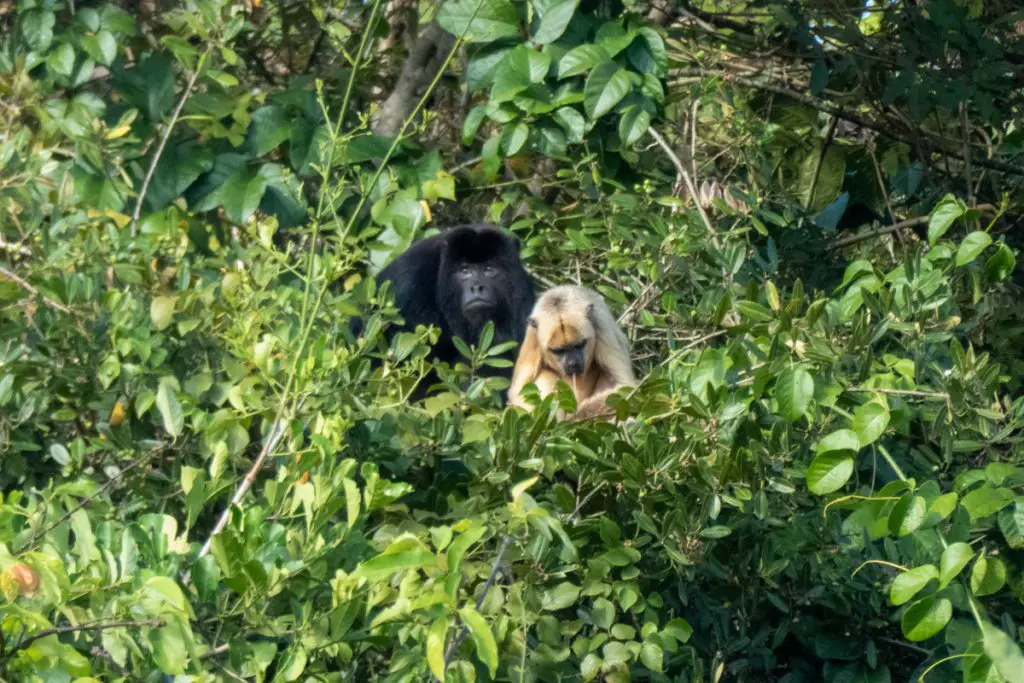
The area around the Thousand Year Old Tree is a fantastic place to explore. A whole range of wildlife calls this area home and it is possible to see everything from spider monkeys, howler monkeys, Oropendola birds and tree frogs if you look closely.
Make sure that you wear sturdy shoes and respect the local environment. Stick to established paths and always remember to take your rubbish with you. I also don’t recommend wandering deep into the foliage on your own… we all know how Jungle ended!
5. Swim in Cascada de Latas
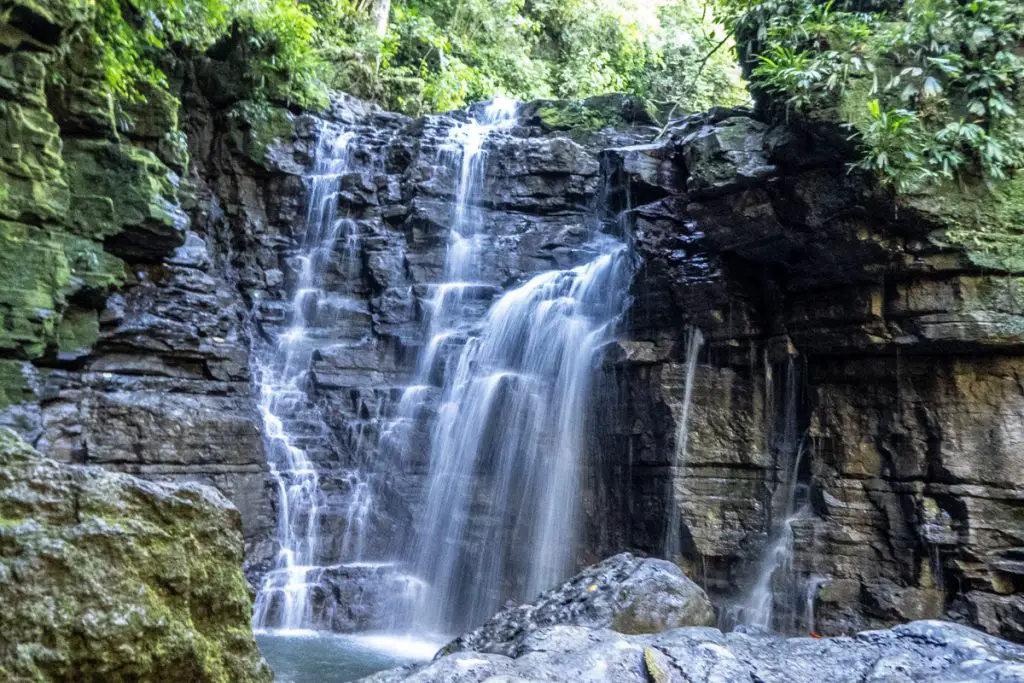
To escape the town for a few hours, catch a bus heading in the direction of Tena and ask for el camino a las cascadas. It will cost roughly $0.50USD for a one-way ticket and the driver will drop you directly outside the entrance.
Follow the signs which take you to the ticket point for Cascada de Latas, a quaint but impressive waterfall outside of town. The hike from this point takes around thirty minutes and costs $2USD per person.
The trail weaves through forested cliffside which is home to a whole range of interesting (and often frighteningly large) insects. The rocks are slippery when wet so make sure you wear grippy shoes and bring a bathing suit for swimming.
Although this is arguably one of the main attractions in the area, it is surprisingly quiet a lot of the time. When I visited, myself and my two pals had the waterfall and pools to ourselves.
6. Check out AmaZOOnico Wildlife Rescue centre
Founded in 1993, AmaZoonico Wildlife Rescue centre is now one of the biggest in Ecuador. There is a huge problem the world over when it comes to the illegal wildlife trade and the impact of this can be greatly seen in Amazonian areas.
AmaZOOnico spans five hectares of land and the centre is home to several different animals, most of which were previously kept as exotic pets. Whenever possible, the centre aims to rehabilitate animals and reintroduce them back into their natural environments, however, there are instances when sadly this cannot happen.
It is depressing that places such as this need to exist, however, they are imperative in preserving different species and providing a decent quality of life for those left behind.
7. Go tubing in the Napo River
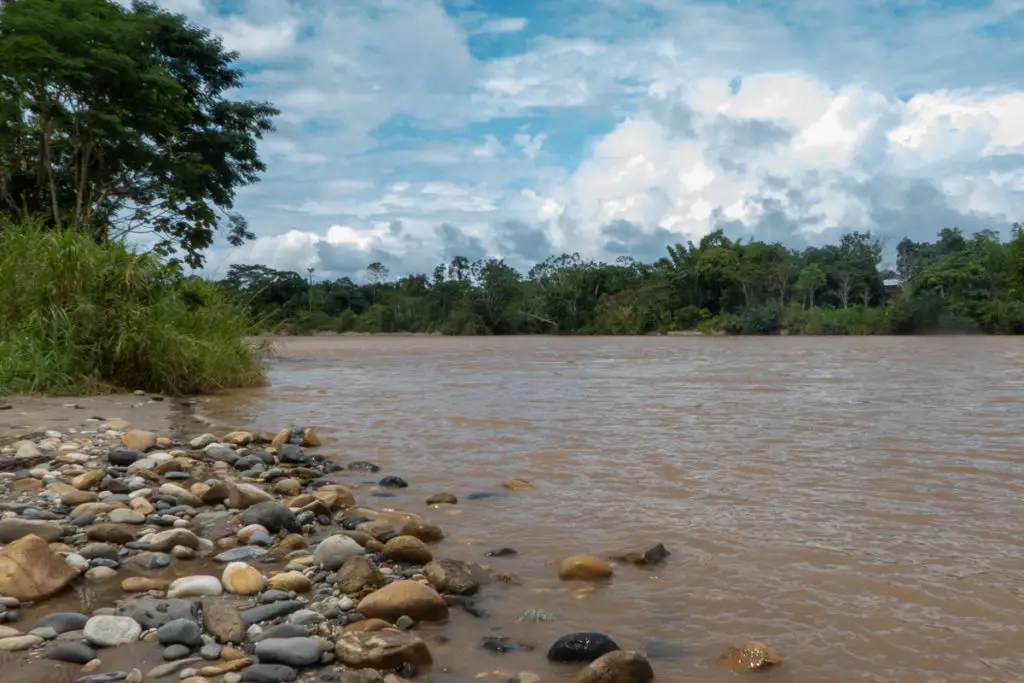
If you’re looking to kick back and take in the jungle views in a novel way, spend an afternoon tubing down the Napo River. Riding the river on an inner tube is surprisingly simple and the techniques are easy to pick up.
Tubing is a great way to spot the local wildlife from the comfort of your tube on the (mostly) lazy river. Don’t forget to lather up with suncream and insect repellent before setting off as you will be exposed to the elements for the duration of your journey.
Runawa tours come highly recommended and a tubing trip complete with a guide will cost you around $25 with them. Alternatively, you can hire the inner tubes in town and go independently. I’d only recommend doing this if you are with a local who knows the river well!
8. Do a night hike in the jungle
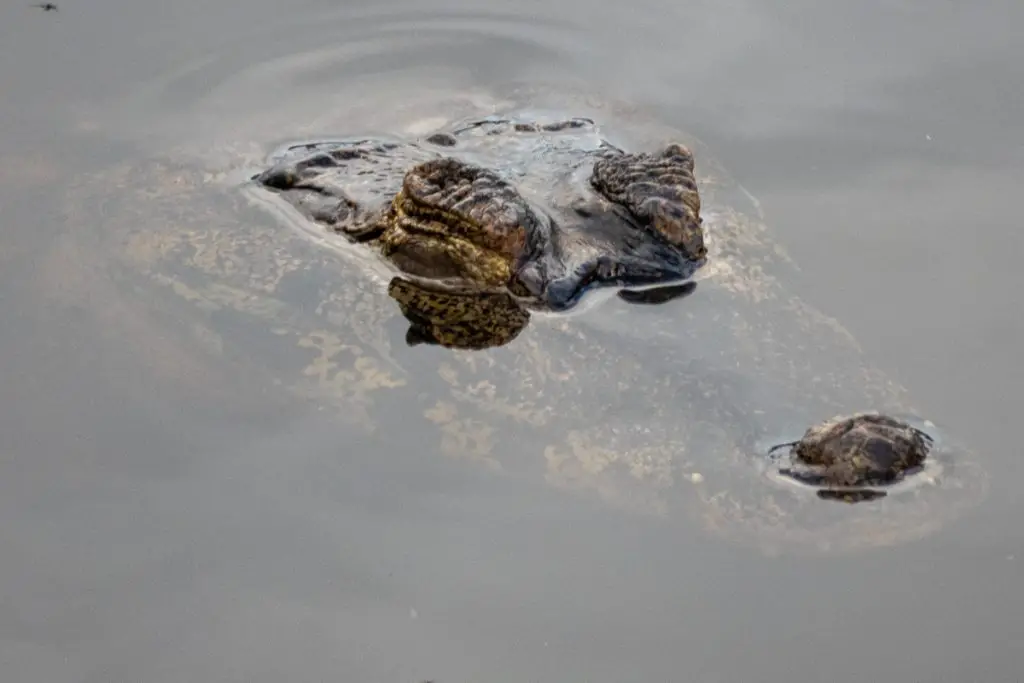
Exploring the jungle at night offers a wonderful opportunity to spot different animals to those you are likely to see in the day. This is when the biggest spiders come out *shudder* and you’re also more likely to see larger animals such as caiman.
While it is pretty unlikely you’ll spot a jaguar running around, insects, reptiles and small amphibians are hiding in abundance. When exploring the jungle at night, it is always good to go with a local or guide. These night walks are often included as part of a multi-day jungle tour.
Always remember to bring a head torch and wear sensible shoes. In case you were wondering, flip flops are actively discouraged and would fall into the category of ‘stupid shoe’.
When you walk in jungle areas after dark, you should be careful to strike the balance between being quiet enough to see wildlife but also loud enough that you don’t take anything by surprise. A number of very dangerous snakes live in this area and they don’t take kindly to strangers creeping up on them…
9. Boat down the Napo on a river cruise
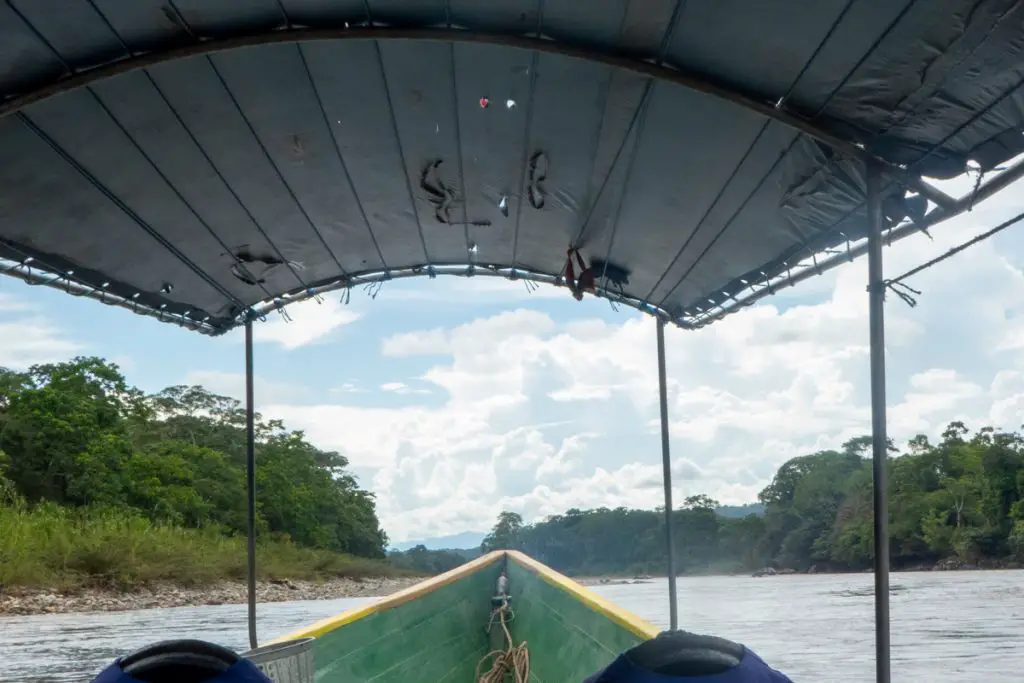
Head slightly out of the main plaza towards the river and you will find endless motorised canoes offering river cruises. Haggling for these boat rides is common practice and if you can find a couple of other people to team up with, you are likely to get a better deal.
Although this experience is nothing like doing a Pampas tour in Bolivia and you are unlikely to same the same amount of wildlife, it is still a relaxing way to take in the local views.
10. Sample the local food scene
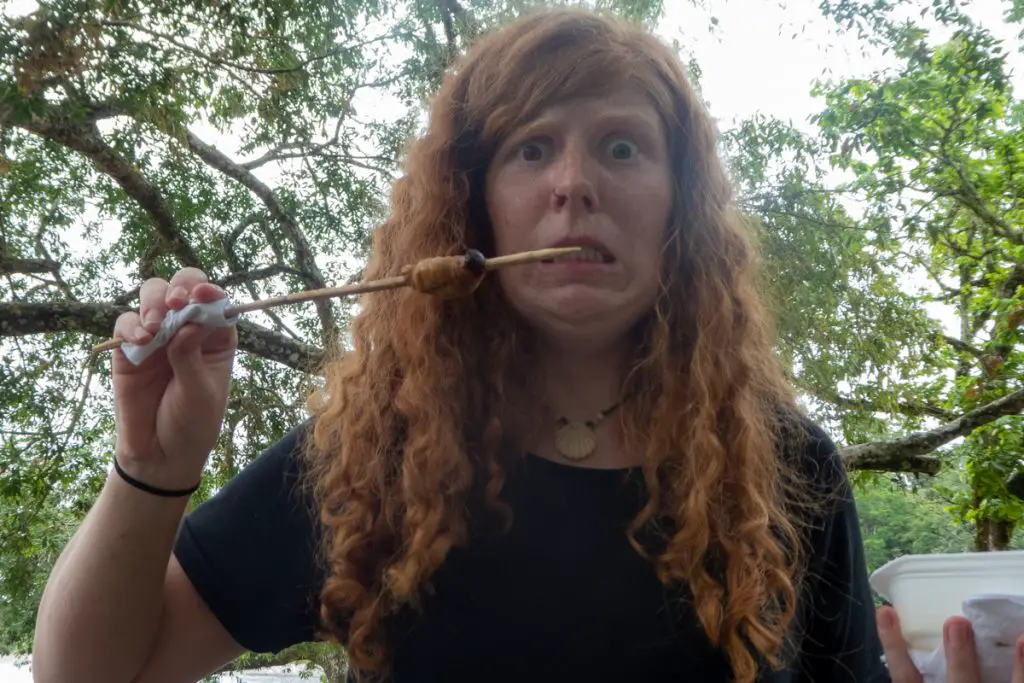
At weekends, the street food vendors come out in force and line up along Misahuallí’s main riverbank, just behind the main square. There are many tasty eats on offer here and you can choose everything from choclo con queso (corn on the cob, rolled in mayo and sprinkled with cheese), salchipapa (fried sausage with chips and cabbage) to maduro con queso (fried platano sliced and stuffed with mayo and cheese).
For those of you that are really adventurous, there is also the option of pincho de chonta curo which is essentially fried grubs on a stick. I was all psyched up to try the grub until Tim informed me that they pop in your mouth. Despite a little gnawing at the saggy edge of the grub, my gag reflex decided it was a no go. Don’t be put off by me though, the locals love them!
11. Relax on the beach
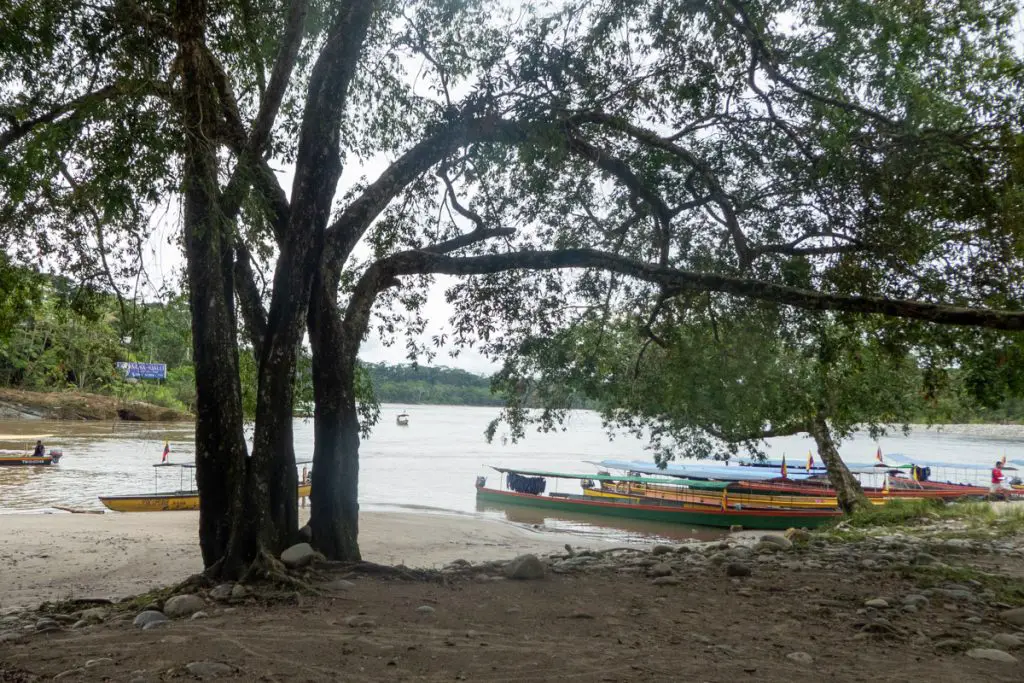
Make the most of the beautiful beaches in Misahuallí by grabbing a spot on the riverfront with a book. The abundance of food and drink nearby means that you can stay for hours with very little need to move.
Toilets are just in front of the beach but you will need small change to pay to use them. Always remember that the monkeys are never far away… They will wait until your back is turned to nab anything within reach! Keep an eye on your belongings and stow away anything valuable in a safe place.
12. Embark on a jungle tour
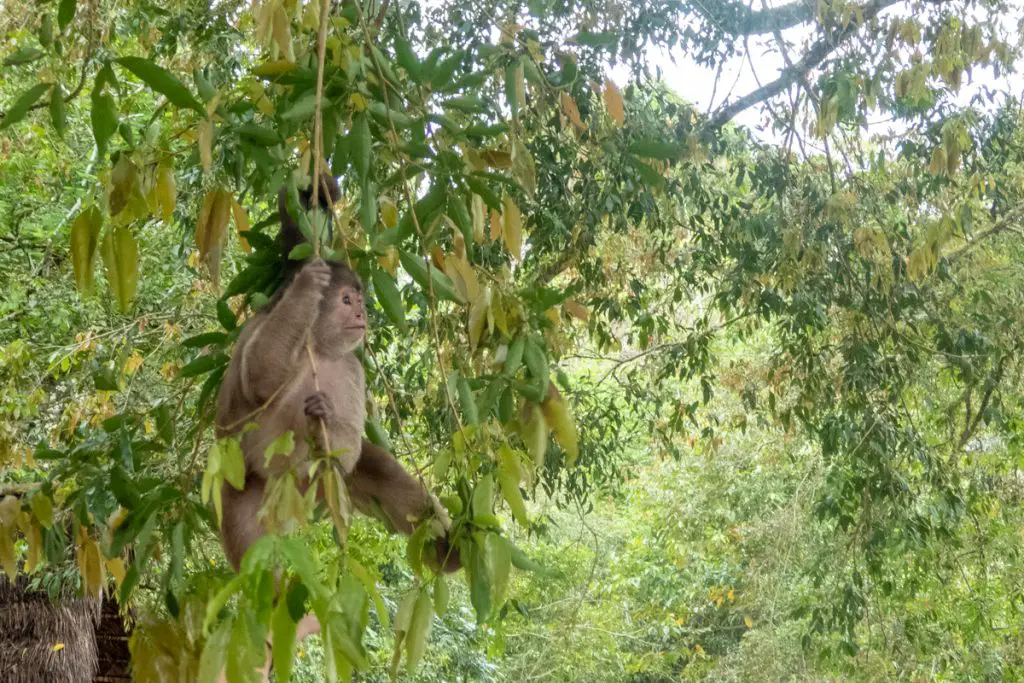
The primary motivation for most travellers visiting Misahuallí is to explore the Amazon. Unlike other popular jungle hotspots in South America, the Ecuadorian Amazon is much less visited than Amazonian spots in Brazil or Bolivia.
Although jungle tours are available in nearby city Tena, many of these trips will take you straight to the small town of Misahuallí and charge you way over the odds for the privilege. Therefore, it is far better to arrange your trip once you’re already in town.
Staying and working in Misahuallí for a few weeks allowed me to get to know some of the people living there. This meant that I was able to do a lot of jungle exploration in the company of locals, independent of a tour.
If you are looking to embark on a jungle tour from Misahuallí, there are loads of options around town. Tours tend to include a few of the above-listed activities, including a jungle night hike, a visit to the ancient tree, tubing, AmaZOOnico and a stay in the jungle. Make sure that you know exactly what is included in your tour if you are planning on doing some of these activities independently.
Some tours also take you to visit a local Kichwa community. At weekends, members of these communities head to the town square dressed in traditional outfits (and sometimes, nothing at all) to entice tourists onto trips.
If you are looking to spend some time with people from these communities, make sure that you do your research. While you can always learn a lot from other walks of life, it is important to travel responsibly and make sure that your money isn’t fuelling unethical practices.
Where to Stay In and Around Misahuallí
Although there are some good places to stay in Misahuallí, many travellers choose to stay in the nearby city of Tena instead. There are more accommodation options in the city and access to mod cons is much better. If you’re looking to stay in or around Misahuallí, here are a few well-rated options.
Hostal Shaw, Misahuallí
Located in the town centre, this friendly hostel is a must-visit for budget travellers. The staff are wonderfully welcoming and they also sell beer. Result! The rooms are basic but come with everything you need including all-important mosquito nets. When I stayed here, rooms were under $10USD a night.
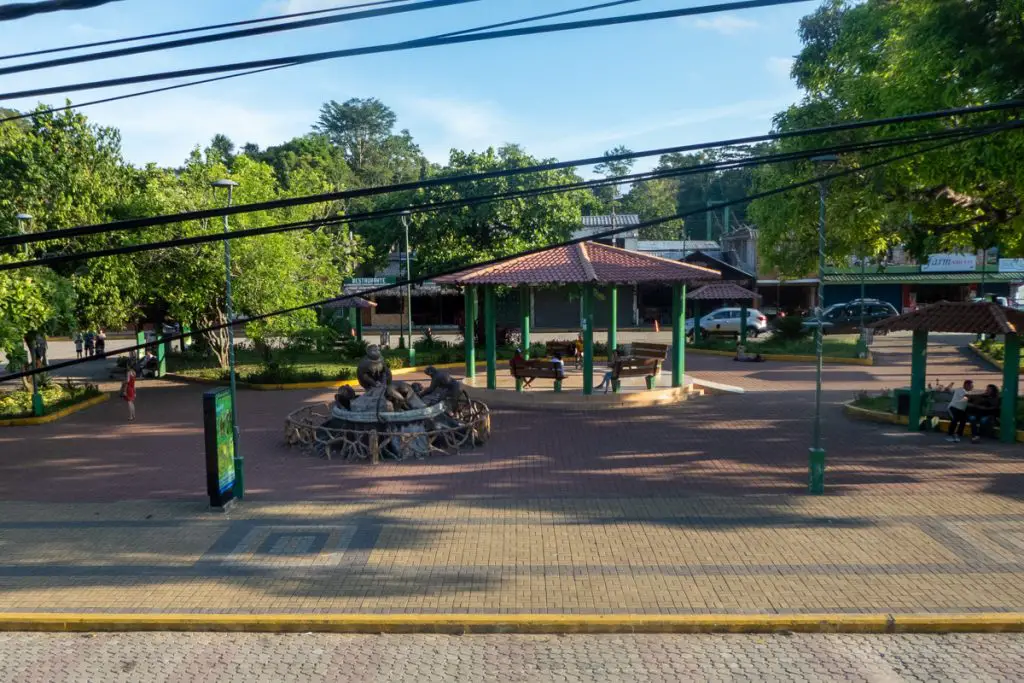
Banana Lodge, Misahuallí
For more comfort, head to Banana Lodge. Perched on the banks of the Misahuallí River, this comfortable lodge provides all the convenience of being located close to the centre of town without the noise (and monkey drama)!
Hostal Pakay, Tena
This peaceful retreat is situated around a 15-minute walk from the centre of Tena. It is a great choice for eco-conscious travellers as the guesthouse has been constructed using recycled materials and there are also composting toilets. Hostal Pakay also runs jungle tours with pickup from Tena.
How to Get to Puerto Misahuallí
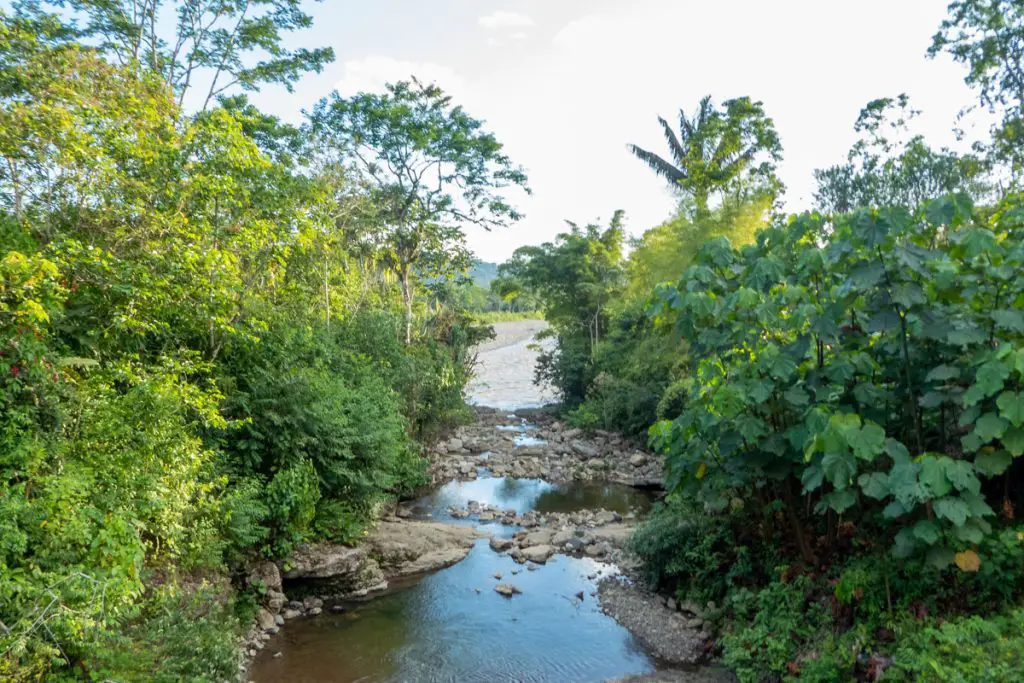
From Quito:
Cooperativa de Transport Amazonas has a direct daily service from Quito Quitumbe to Puerto Misahuallí. The journey takes around 4-5 hours and costs between $7-10USD.
From Tena:
Catch one of the regular buses from the Jumandy bus station in Tena. The journey will take around one hour and cost just $1USD per ticket. If you’re a shoestring traveller, this is the option for you.
If you find the idea of the local buses too daunting or don’t feel confident enough to tackle the bus station with your level of Spanish, you can also grab a taxi. Look for taxis parked outside of bus stations and always negotiate the price before you get in.
Have you been to Misahuallí? Let me know in the comments!

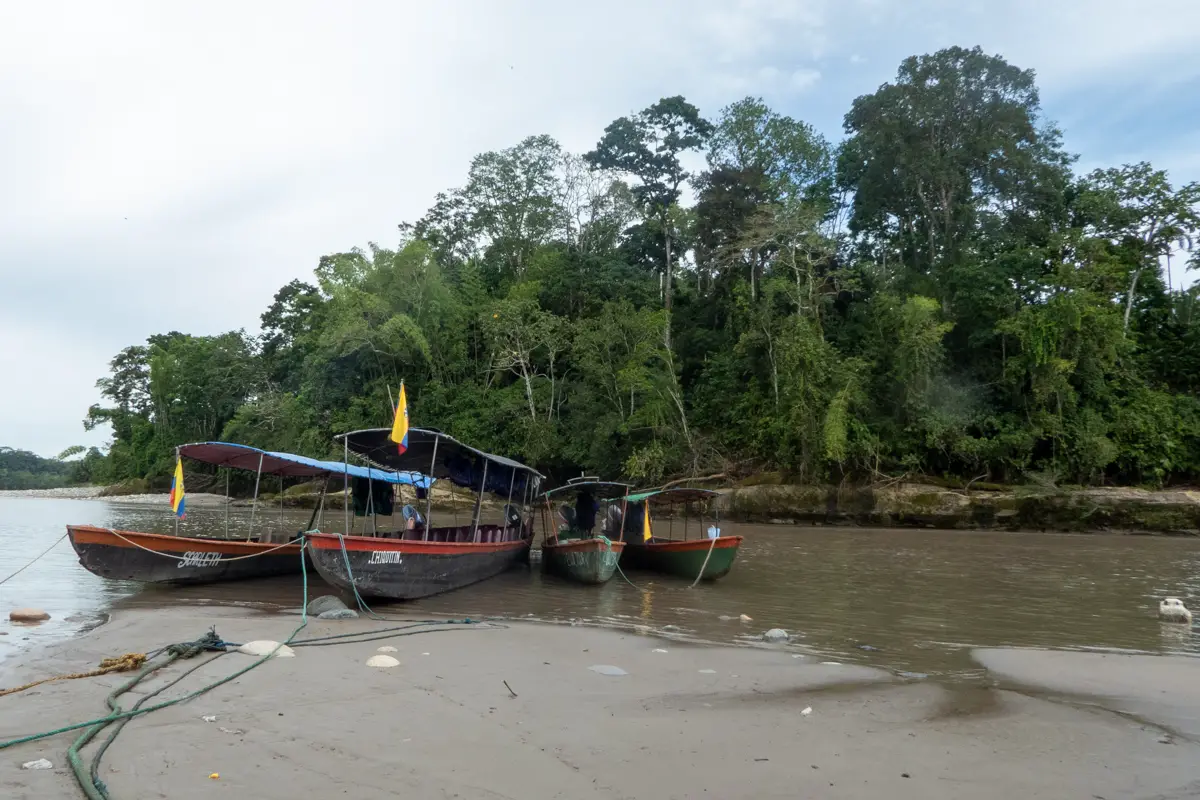

Yes I was there twice in 1977 and 1979. Both times I stayed i what was the only hotel in town (I don’t remember the name). It was a two story bamboo building with 10 rooms. Back then taking the trip down the Napo was an overnight to Coca. In order to go down you had to have 10 people (same as the rooms 😁) and it took one week to get 10 people together.
The overnight stay was in an open grass covered hut. Back then I asked the guide if he could put together so Iahuaska (?) Which he did and it was as good as expected.
While in Midahualli I went into the jungle to see the most diverse butterflies all in the wild.
The best way to get there is by bus or car from Banos
Of course you can’t take the boat down the Napo if you bring a car because the only way back is by taking a bus from Coca to Quito and then back to Misahualli. I had to come back two years after the first time but this time the road in from Banos had huge billboards offering trips downboardsb
Hi Bob! Thanks so much for sharing your memories of Mishualli! It has certainly been developed since you were there but I’d like to think it hasn’t lost too much of its jungle charm! 🙂 I’d love to hear your thoughts if you return in the future!
I was there 2008 and unfortunately I didn’t feel good there. I stayed at a hostal at the plaza (maybe it was Shaw hostal but it belonged to locals… a couple and I think they had older children). When I was there I volunteered at a Quechua school just a few minutes down the river. But I felt so lonely there because the host family was so distant (afterwards I heard that the wife of the owner had breast cancer which I didn’t know when I was there). And there were no tourists in town at the end of April. I missed Quito so much that I went back to Quito after a week. Today I feel quite bad about it – after I heard of her having cancer and them probably not having enough money to pay for treatment… and in general I guess my Spanish back then wasn’t good enough and I had no idea what to expect in Misahualli.
I have three kids now and we are actually planning to travel to Ecuador within the next year. I definitely want to go back to Misahualli at least for a day just to see it again and have some closure because I felt not good there but also not good for leaving so quickly… don’t really know how to explain. I was young and had zero experience about what jungle means.
Now I know what to expect and my Spanish is way better (back then there was actually no one who could speak English) and no tourists (as I said before).
I remember the monkeys – soooo amazing. And I remember my host family having a terrarium in the hostal with tarantulas – I was soooo scared of them… couldnt sleep with them in the house 😂
I am so excited to go back – and it’s also so out of my comfort zone (because of snakes and spiders).
Hi Verena,
Thanks for reading and sharing your memories of Misahualli! I hope you have a better return visit (and can avoid the snakes and spiders)!
Hi,
Thank you for this information! We stumbled upon Misahualli, and we are very interested in going for a few days. We would love to do one overnight rain forest tour to experience some of the things you mentioned. However, I can’t figure out to pre-arrange this. You mentioned knowing many of the local tour guides, as well as being careful about visiting local communities, making sure to travel responsibly and do research before we get there. I agree 100%, and I am hoping you can provide me some direction. Do you know any names we should ask for when we get to town? Or ways to contact people in advance to see what the tour includes? I’m trying to figure this out so I can also plan lodging for each night. Any information you can pass on would be so greatly appreciated. We will be there in March. We are a family of 5 (18, 20, 22, and two 50 somethings) and two of us are fluent in Spanish.
Thank you so much!